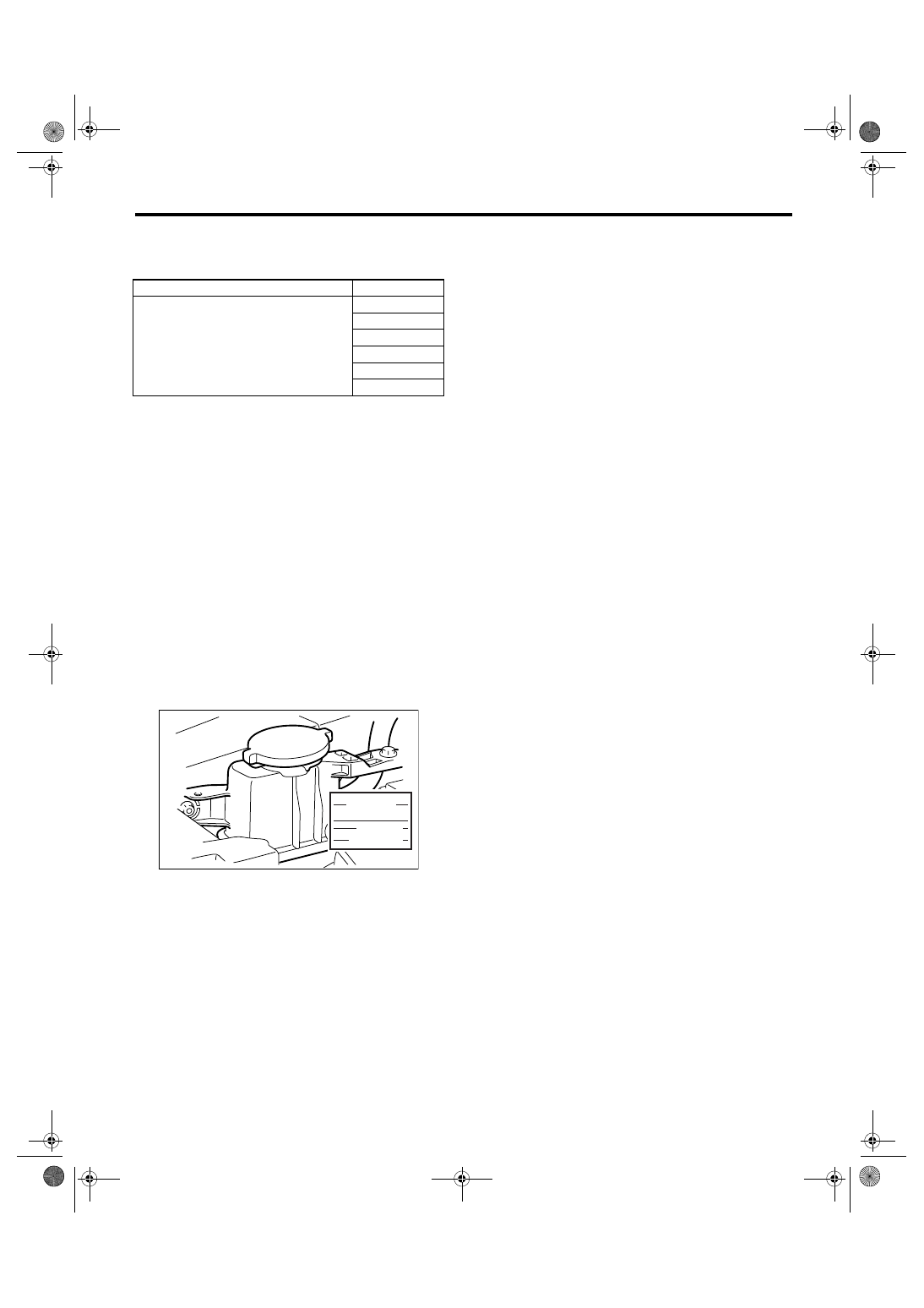Subaru Legacy (2005 year). Manual - part 855

PS-91
POWER ASSISTED SYSTEM (POWER STEERING)
Power Steering Fluid
11.Power Steering Fluid
A: SPECIFICATION
B: INSPECTION
1) Check the power steering fluid for deterioration
or contamination. If the fluid is highly deteriorated
or contaminated, drain it and refill with new fluid.
2) Check the joints and units for oil leakage. If any
oil leaks are found, repair or replace the applicable
part.
3) Inspect the fluid level on flat and level surface
with engine “OFF” by indicator of reservoir tank.
If the level is at “MIN.” point or below, add fluid to
keep the level in the specified range of the indica-
tor. If at “MAX.” point or above, drain fluid by using
a syringe or the like.
(1) Check at power steering fluid temperature
20
°C (68°F); read the fluid level on the “COLD”
side.
(2) Check at power steering fluid temperature
80
°C (176°F); read the fluid level on the “HOT”
side.
C: REPLACEMENT
1) Lift-up the vehicle.
2) Remove the crossmember support.
3) Remove the pipe joint in the center of gearbox,
and connect the vinyl hose to the pipe and joint.
Wipe fluid off while turning the steering wheel.
4) Add the specified fluid to reservoir tank at MAX
level.
5) Continue to turn the steering wheel slowly from
lock to lock until the bubbles stop appearing on oil
surface while keeping the fluid at the level in the
Step 4).
6) If turning the steering wheel in low fluid level
condition, air will be sucked in pipe. In this case,
leave it about half an hour and then do the step 5)
again.
7) Start the engine and let it idle.
8) Continue to turn the steering wheel slowly from
lock to lock again until the bubbles stop appearing
on oil surface while keeping the fluid at the level in
Step 4).
Normally bubbles stop appearing after three times
turning of steering wheel from lock to lock.
9) In case bubbles do not stop appearing in the
tank, leave it about half an hour and then do the
step 4) all over again.
10) Lower the vehicle, and then idle the engine.
11) Continue to turn the steering wheel from lock to
lock until the bubbles stop appearing and change of
the fluid level is within 3 mm (0.12 in).
12) In case the following happens, leave it about
half an hour and then do step 8) to 11) again.
(1) The fluid level changes over 3 mm (0.12 in).
(2) Bubbles remain on the upper surface of the
fluid.
(3) Grinding noise is generated from oil pump.
13) Check the fluid leakage after turning steering
wheel from lock to lock with engine running.
Recommended power steering fluid
Manufacturer
ATF DEXRON III or equivalent
B.P.
CALTEX
CASTROL
MOBIL
SHELL
TEXACO
PS-00463
HOT MAX
COLD MAX
HOT MIN
COLD MIN